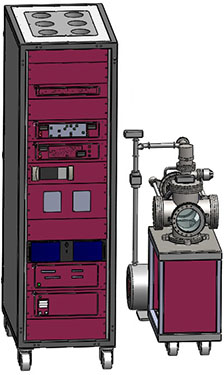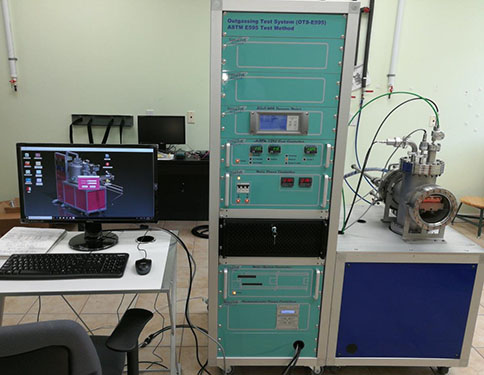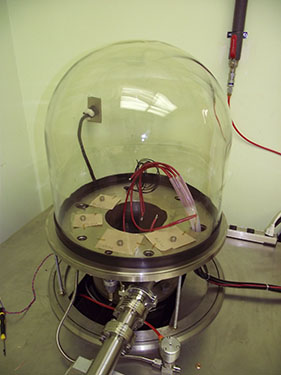ASTM E595 Outgassing Test Systems



The Pre-Tester is a simple system for determining the possibility of outgasing (ASTM E595 or ASTM E1559) with unexplored materials. Pre-Tester has a simple design that allows you to quickly determine the suitability of this material for further analysis. In case of unsuitability of the material, the vacuum chamber and other parts can be easily cleaned from traces of deposition. A stainless steel disc or glass plate with a diameter of 1″ cooled (250C) by water is used as a collector. Sample heating (1250С or at high temperature 150°C, 200°C, etc.) is carried out by a cartridge electric heater. A 1 L vacuum chamber is pumped out by a turbo pump F70EACCF to a pressure of 10-7 Torr. The time for this express analysis does not exceed one hour. The new chamber for pre-testing of unknown materials will be connected to the existing electronics support rack of IOS-2012 and will be operated from the existing computer and the COSIMOD software. New control windows will be created in the COSIMOD software to operate the pre-testing vacuum chamber. The pre-testing will consist in putting an unknown material into the Effusion Cell and conditioning it in the vacuum chamber at +125°C or at high temperature (+150°C, +200°C, etc.). The stainless steel or glass plate collector will be located above the orifice in the Effusion Cell to collect the evaporation mass flux from the material. After 24 hours the collector will be removed from the chamber and weighted. This mass increase will be compared to the corresponding frequency change of the QCM sensors, provided the sensitivity of the sensor (1.73×10-9 g/cm2/Hz). Testing of the material in the ASTM E1559 test chamber of IOS-2012 System is allowed if the expected frequency change of the coldest QCM sensor is less than 5-7 kHz.
